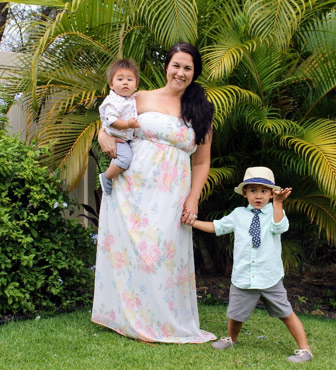Living in today’s world often equates to being pulled in multiple directions at any given time. We are expected to be present, yet technology has given us the means to perform multiple tasks at once while parenting. Simplifying the expectations that we put on ourselves and prioritizing making connections with others can add a bit of sparkle and energy to your world that you may have not even realized was missing. How can we instantly simplify our day to day routine and create this magic connection? Start with consciously making eye contact when communicating.
Being an Active Listener
Super hero parents can juggle reading a text, catching up on friends’ lives via social media or pay the bills online at any given moment while wearing their parenting hat. Many individuals proudly name their ability to “multi-task” as an asset on resumes and to others when describing their strengths. The thing is, if we don’t take the time to give others our full attention human connection can quickly diminish. Making eye contact and being present with our little ones is an important non-verbal behavior that communicates we hear, we see, and we care. Being an active listener creates a space for communication, and it all starts with a comforting gaze during conversation.
Being Present Through Body Language
Feeling heard builds confidence in children of all ages. Giving full value to what our children are communicating with us lies in the beauty of the eyes. Our body language and eye language lets our children know that their words, actions, and work are valued. Making eye contact with our children tells them we are present. Children seek attention from us all the time; why not give them the positive attention they deserve by observing their actions and hearing their thoughts.
Modeling Rather Than Demanding Eye Contact
There are those times that all parents need to turn on their “serious tone” and demand that their child give them eye contact to acknowledge what is being said. This definitely needs to be done from time to time, but it should be balanced with a good dose of voluntary communitive eye contact that is child initiated. If we only practice eye contact when it is demanded, our children will learn that this is the only time it is needed. It is also very important to never verbally demand eye contact of another person or child unless you know the individual very well. Many people struggle with eye contact for a variety of reasons (including anxiety and autism to name a couple). If an individual looks down when being spoken to, they may very well be giving you their full attention and respect. During a conversation, there should be natural breaks in eye contact and the gaze should be relaxed. Modeling eye contact is always more important and effective than demanding it.
Taking time to establish healthy communication skills at an early age will help children in a variety of social setting and relationships in life. It all starts with active eyes, so put the device away, sit down, and engage with your child. Make eye contact and enjoy the beauty of being in the moment.
About the Author
 Heather Baylosis, is the mother of two wonderfully wild little boys. She has worked in elementary education for the past 15 years. Her educational background includes a B.S. in Elementary Education and Dance Education with a certification in Early Childhood Development. She also holds a M.S. Ed. in Literacy Education grades Pre K – 12. Heather lives on the island of Maui with her husband, sons and dog. She loves exploring nature with her little ones and spending quality time with family and friends.
Heather Baylosis, is the mother of two wonderfully wild little boys. She has worked in elementary education for the past 15 years. Her educational background includes a B.S. in Elementary Education and Dance Education with a certification in Early Childhood Development. She also holds a M.S. Ed. in Literacy Education grades Pre K – 12. Heather lives on the island of Maui with her husband, sons and dog. She loves exploring nature with her little ones and spending quality time with family and friends.

